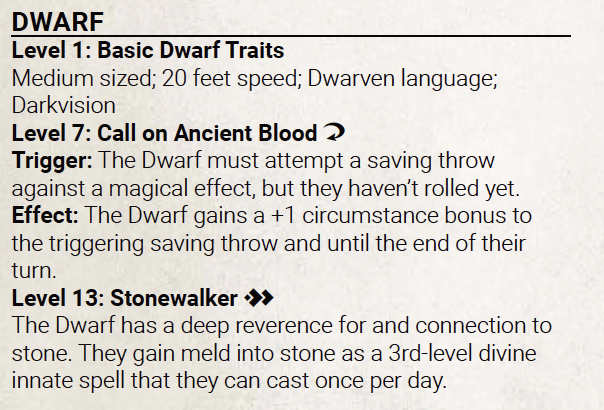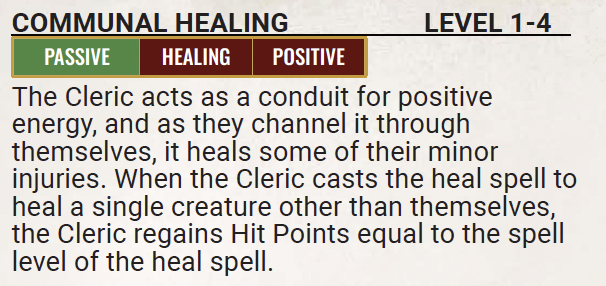So, last night's session in our PF2e campaign ended in a hideous TPK against a Black Pudding (as discussed here). Urk! That aside, the evening was separately interesting, too; I tried out a new approach to large, winding dungeons in Pathfinder 2e. In short, the PCs needed to explore an ancient sewer complex, looking for guarded halls holding stone keys that could open an underground archive door. Ok, great.
However, PF2e -- which is excellent for running fun, tactically-minded encounters -- can be a little bit of a beast for 'traditional' dungeoncrawling. Fights can take a long time (an issue I discussed recently, here), and the resource-management game doesn't seem to fit very well with PF2e mechanics (my mid-level party has Light as an at-will cantrip, and many of the standard OSR-style resource counters just don't do much to a group like this).
But I wanted to highlight the experience of pushing your luck while exploring a really large, winding dungeon - without taking FOREVER, and without just hand-waving past the exploration to the fight scenes. (The campaign that just ended had a vast dwarven-hold on the forecast, so this was a bit of an experimental prototype with a really large dungeon in mind). Note, PF2e does include its own Exploration rules, which are alright, but I wanted something a bit different, a bit meatier, and a bit closer to the OSR- and/or PbtA-system games that I'm more accustomed to for handling the dungeon as a threatening/promising, vast space.
So, drawing on influences ranging from OSR/NSR-style dungeons, to the various forms of Jason Cordova's PbtA Labyrinth move, I put together some rules, which I'm pasting below in case they're of use to anyone else.
The key concepts to note here:
+ There are probably widely applicable ideas here, though the current form is tailored closely to a unique environment - the sewers are flooded perpetually by magical pitchers of everlasting water, and then drained by a pressure-gate into an underground river. Much of the punch of this dungeon, and these rules, involved the cycles of waxing and waning danger as the tunnels fill and empty. To apply these procedures to a different dungeon, you'd need to think carefully about some analogous source of time-sensitive pressure and risk (sentry patrols, sleep cycles of drowsy monsters, etc.).
+ I wanted RANDOM ENCOUNTERS, but actual random fights in PF2e would slow things down like treacle in your gas-tank. PF2e's HAZARDS and HAUNTS rules fit the bill, however! I just ran with "Simple" Hazards (no Complex Hazards), which pitch a quick Saving Throw against the risk of some kind of consequence - either a lasting Condition (Fatigue, Drained, etc.) or some Hit Point loss.
+ Our PF2e characters could nerf most HP loss with a few ten-minute rests, so I added a significant set of time pressures; flooding tunnels that made exploration harder and more dangerous in 100-minute cycles, and then "above-ground-world" political shenanigans to make overnight rests more costly.
+ I wanted to keep everyone involved and give at least a nod to the narrative implied by dice rolls, so I made two players roll skill checks each turn, tied to narratively justified exploration tasks on a continually-narrowing field of eligible actions. Two skill rolls each exploration turn allowed a PbtA-style "2 successes, 1 Success with a consequence, or 0 Successes and a Consequence" structure that helped add tension to the exploration.
Ok, here it is.
+++
SEWER-TUNNELS AND ARCHIVE BENEATH THE TOMB-CITY - DEC 2022 PF2e CAMPAIGN
TRACK:
WATER level; Time spent (6 turns = 1 hour); Skills used; PROGRESS.
Each 10-minute turn…
1) raise the water level by 1 at the start of the turn (this runs from 1-10)
2) party chooses to REST for ten minutes (can recharge focus points, etc.), PRESS ON, or RETREAT
3) Before rolling, party chooses/updates their Exploration stances
+ To PRESS ON: 2 different players each choose one dungeon-appropriate skill check, vs. DC 22 PLUS the current water level as the DC.
⁃ with 2 successes: players gain 2 progress to find another Hall
⁃ with 1 success: players gain 1 progress and have 1-in-3 chance of an
Encounter
⁃ with 0 successes: players gain 0 progress and have a random encounter
+ To RETREAT: all players choose a known safe/dry destination (the starting hall or another discovered dry hall) and then roll against a dungeon skill check of their choice from the list.
⁃ Critical Success: this PC safely reaches their destination, and may raise one
other PC’s result by one level (up to Success).
⁃ Success: this PC safely reaches their destination
⁃ Failure: this PC fails to reach their destination. If water level is at 10, trigger
drowning procedure.
⁃ Critical Failure: as Failure, but raising safely will take 2 Critical Successes.
+ RANDOM ENCOUNTERS:
1: Exhaustion - all PCs make DC 25 Basic Will OR Fortitude Save, or gain Fatigued 1 (Fatigued 2 on Crit Failure)
2: Swarm of water-snakes: all PCs make DC 24 Basic Reflex Save vs 4d8 + 18 dmg
3: Ghostly specters seeping from drain-pipes: all PCs make DC 27 Basic Will Save vs. 2d8+9 dmg, 1/2 dmg on Success, Drained 1 on Failure, Drained 2 on Crit Failure.
4: Large Electrical Eel discharges - all PCs make DC 24 Basic Fortitude Save vs 6d6 damage
5-6: Green Slime drops on 1 random party member (Lvl 9 Hazard)
Lvl 6 SIMPLE HAZARDS (see GM Guide p. 76)
+20 Attack vs AC - or - 24/27 DC (High/Extreme) - 4d8+18 dmg
In most cases, the failed roll that led to an Encounter counts in lieu of the failed Perception or Initiative roll - move right to the encounter trigger. For some, may ask PCs to make a fresh Save or Skill roll as relevant for one last chance to perceive a trap.
+ Eligible Dungeon Skill Checks (each time one is attempted, cross it off the list of eligible Skills. Reset the list when all have been attempted):
⁃ Acrobatics … you move out along a very slippery, narrow ledge as you scout a
way forward…
⁃ Arcana … you observe very, very old arcane symbols carved into a walls; a
flash of insight about their likely meaning helps you use them to find your
way.
⁃ Athletics … a pile of rubble nearly blocks your way. Will it?
⁃ (Forerunners Lore – Tullem only…)
⁃ Nature … You’ve some experience with caves and underwater rivers, which
helps you stay focused and oriented now.
⁃ Occultism … you’ve read rumors about the obscure logic of this ancient
civilization’s constructions. You use that knowledge now to hazard a guess
about the right direction.
⁃ Religion … faded but uncomfortably bizarre religious carvings on the tunnel
walls dimly suggest a directional orientation in line with very ancient creedal
constructs.
⁃ Society … You remember a nugget of historical information about the fey
architects’ language. Can it help you decipher the directional symbols carved
on the wall before you?
⁃ Stealth … A noise - is something creeping nearby? Try to lead your party
sneakily away.
⁃ Survival … The rising water is cold, and its ever-gurgling echoes are
disorienting. But you’ve been in tough spots before; can you keep the party
moving, warm, and focused?
⁃ Thievery … the way ahead is blocked by an ancient lock, or threatened by
what looks like a very old trap meant to cull large vermin. It could still pose a
problem for you and your friends. Will it?
+ Flooding and Drowning: the under-sewers are filled, flooded, and cleaned by an ingenious arcane system: far away in the bowels of the narrow tunnels lies a chamber eternally filling with water from a great many Ewers of Endless Water; elsewhere in the tunnel system is a similarly-remote chamber with a pressure-activated, resetting release gate. Every 100 minutes, the whole tunnel system floods completely and then drains (into an underground river) in a great rush of water. (Locating either the water-supply or water-draining rooms should be nigh impossible, but if the party insists, set a 12-Progress clock specifically dedicated to finding each room).
Mechanically - the Water Level count goes up to 10, at which point the entire complex except for the Halls is flooded to the ceiling. If any PCs end an Exploration Turn in the tunnels while they are at Water Level 10 (before they reset to Level 1 on the next Turn), those PCs are at severe risk for drowning. As there is a double risk present - running out of air, AND being dragged and smashed along the walls - having access to an air supply still requires a roll, but grants a +10 bonus. Sharing an air supply (like the Air Bubble spell) cuts the bonus in half for each extra person sharing the supply.
Roll a Fortitude Save, DC 32 (this includes the Water Level penalty):
Crit Success: Almost mathematically impossible…but you survive, and suffer no lasting ill effects.
Success: Miraculously, you find a few pockets of air in hollows in the ceiling, and just barely survive, though you feel like trash. Take condition Drained 1.
Failure: The fact that you aren’t dead is almost inconceivable. Take the condition Drained 4.
Critical Failure: your character dies.
You may spend all your Hero Points to escape death - either from damage caused on a Failure, or the straight fatality on a Crit Failure. However, doing so from a Crit Failure ‘upgrades’ you to a Failure, so you are Drained 4.
The Halls - it takes 6 PROGRESS to locate a new hall; roll randomly to find which hall is discovered next, as the party wends through the twisting underground labyrinth of the tomb-city’s under-sewers.
+ Entrance Hall (lone shabti who can explain some of what’s going on) … uh-oh…do they only speak the ancient tongue?
+ Hall of the First Keeper: one glass golem with an Archive key in a hinged, clear glass compartment/box on its hip. (could be combat OR thievery encounter)
+ Hall of the Second Keeper: one glass golem (as above), along with 2 Shabti who will warn the golem if they observe a theft in progress. Need to flesh out this encounter. (could be combat, thievery, and/or social encounter the shabti are upset about the destruction of the iron golem in Room 3…they don’t want anything to happen to their golem ‘friend’ here, and they care more about him than they do about the silly key he carries. They will warn him of a theft attempt in progress, UNLESS the party destroys the horror in the Third Hall. Ah - maybe the shabti are on the approach to a raised pedestal where ‘their’ golem is (they visit him daily in a mock ritual). They will see and warn the party.
+ Hall of the Third Keeper: few remnants of an iron golem, along with the Black Pudding that dissolved it. The stone Archive key is here, half-in the pudding.
+ Hall of the Archive Gate: a large round portal, bearing three large key-holes, and sealed by ancient, eldritch magics. It won’t open without the three Archive keys turned together. A winding stairway leads up to a distant locked door. Beyond it, horrible moaning sounds – death clearly awaits on the other side (ca. 20 Wights)



















